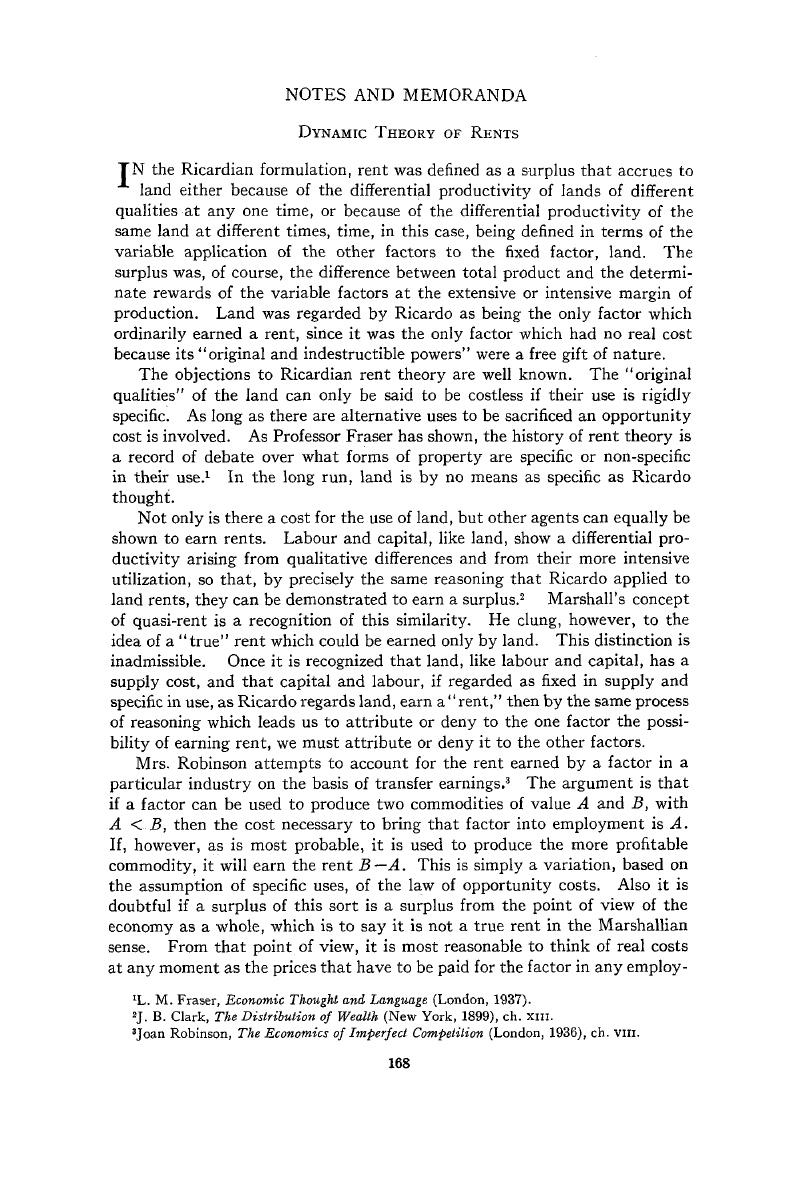Article contents
Dynamic Theory of Rents
Published online by Cambridge University Press: 07 November 2014
Abstract

- Type
- Notes and Memoranda
- Information
- Canadian Journal of Economics and Political Science/Revue canadienne de economiques et science politique , Volume 12 , Issue 2 , May 1946 , pp. 168 - 172
- Copyright
- Copyright © Canadian Political Science Association 1946
References
1 Fraser, L. M., Economic Thought and Language (London, 1937).Google Scholar
2 Clark, J. B., The Distribution of Wealth (New York, 1899), ch. XIII.Google Scholar
3 Robinson, Joan, The Economics of Imperfect Competition (London, 1936), ch. VIII.Google Scholar
4 Inertia is commonly found in mature industries. It is a concept to which too little attention has been paid by economists. It is, however, a fact that innovations, readily accessible to all, are taken up by only a few firms at first and adopted later by others only when competitive disadvantage has become sufficiently grave to overcome inertia. Inertia is only in part attributable to the fear of losses from the increased rate of obsolescence. It is partly non-economic and arises from the natural conservatism of the business man in an “established” way of business and his reluctance to admit of improvements until their superiority has been proved beyond doubt, often to his cost.
5 See Carlson, Sune, A Study on the Pure Theory of Production (Stockholm Economic Studies, 11 9, 1939), p. 17.Google Scholar The same concept is called the “elasticity of production” by Mr.Johnson, W. E. in his “Pure Theory of Utility Curves” (Economic Journal, vol. XXIII, Dec., 1913).Google Scholar
6 Cf. Keirstead, B. S., “Technical Advance and Economic Equilibria” (Canadian Journal of Economics and Political Science, vol. IX, no. 1, Feb., 1943, p. 55).CrossRefGoogle Scholar
7 Employment is determined by the point of intersection of the marginal factor cost and marginal productivity curves. As long as the supply curve of the factor is positively inclined the marginal product of the factor for that equilibrium employment must exceed the average supply price, or rate of reward that is actually paid.
- 1
- Cited by




